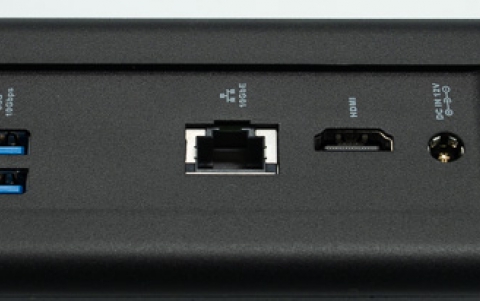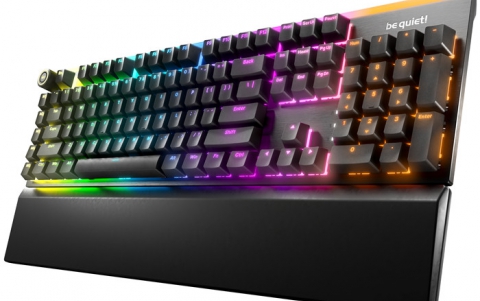
Researchers Create Chip Using Silicon Alternative
Molybdenite, a new and very promising material, can surpass the physical limits of silicon. Researchers at the Ecole Polytechnique Federale de Lausanne (EPFL) have proven this by making the first molybdenite microchip, with smaller and more energy efficient transistors.
After having revealed the electronic advantages of molybdenite, EPFL researchers have now taken the next definitive step. The Laboratory of Nanoscale Electronics and Structures (LANES) has made a chip, or integrated circuit, confirming that molybdenite can surpass the physical limits of silicon in terms of miniaturization, electricity consumption, and mechanical flexibility.
"We have built an initial prototype, putting from two to six serial transistors in place, and shown that basic binary logic operations were possible, which proves that we can make a larger chip," explains LANES director Andras Kis, who recently published two articles on the subject in the scientific journal ACS Nano.
In early 2011, the lab unveiled the potential of molybdenum disulfide (MoS2), a relatively abundant, naturally occurring mineral. Its structure and semi-conducting properties make it an ideal material for use in transistors. It can thus compete directly with silicon, the most highly used component in electronics, and on several points it also rivals graphene.
"The main advantage of MoS2 is that it allows us to reduce the size of transistors, and thus to further miniaturize them," explains Kis. It has not been possible up to this point to make layers of silicon less than two nanometers thick, because of the risk of initiating a chemical reaction that would oxidize the surface and compromise its electronic properties. Molybdenite, on the other hand, can be worked in layers only three atoms thick, making it possible to build chips that are at least three times smaller. At this scale, the material is still very stable and conduction is easy to control.
MoS2 transistors are also more efficient. "They can be turned on and off much more quickly, and can be put into a more complete standby mode," Kis explains.
Molybdenite is on a par with silicon in terms of its ability to amplify electronic signals, with an output signal that is four times stronger than the incoming signal. This proves that there is "considerable potential for creating more complex chips," Kis says. "With graphene, for example, this amplitude is about 1. Below this threshold, the output voltage would not be sufficient to feed a second, similar chip."
Molybdenite has also mechanical properties that make it interesting as a possible material for use in flexible electronics, such as eventually in the design of flexible sheets of chips. These could, for example, be used to manufacture computers that could be rolled up or devices that could be affixed to the skin.
Despite molybdenite's potential, the researchers say it will be at least 10 to 20 years before it enters commercial use. In the meantime the group intends to explore whether the material can be made more conductive.
"We have built an initial prototype, putting from two to six serial transistors in place, and shown that basic binary logic operations were possible, which proves that we can make a larger chip," explains LANES director Andras Kis, who recently published two articles on the subject in the scientific journal ACS Nano.
In early 2011, the lab unveiled the potential of molybdenum disulfide (MoS2), a relatively abundant, naturally occurring mineral. Its structure and semi-conducting properties make it an ideal material for use in transistors. It can thus compete directly with silicon, the most highly used component in electronics, and on several points it also rivals graphene.
"The main advantage of MoS2 is that it allows us to reduce the size of transistors, and thus to further miniaturize them," explains Kis. It has not been possible up to this point to make layers of silicon less than two nanometers thick, because of the risk of initiating a chemical reaction that would oxidize the surface and compromise its electronic properties. Molybdenite, on the other hand, can be worked in layers only three atoms thick, making it possible to build chips that are at least three times smaller. At this scale, the material is still very stable and conduction is easy to control.
MoS2 transistors are also more efficient. "They can be turned on and off much more quickly, and can be put into a more complete standby mode," Kis explains.
Molybdenite is on a par with silicon in terms of its ability to amplify electronic signals, with an output signal that is four times stronger than the incoming signal. This proves that there is "considerable potential for creating more complex chips," Kis says. "With graphene, for example, this amplitude is about 1. Below this threshold, the output voltage would not be sufficient to feed a second, similar chip."
Molybdenite has also mechanical properties that make it interesting as a possible material for use in flexible electronics, such as eventually in the design of flexible sheets of chips. These could, for example, be used to manufacture computers that could be rolled up or devices that could be affixed to the skin.
Despite molybdenite's potential, the researchers say it will be at least 10 to 20 years before it enters commercial use. In the meantime the group intends to explore whether the material can be made more conductive.













